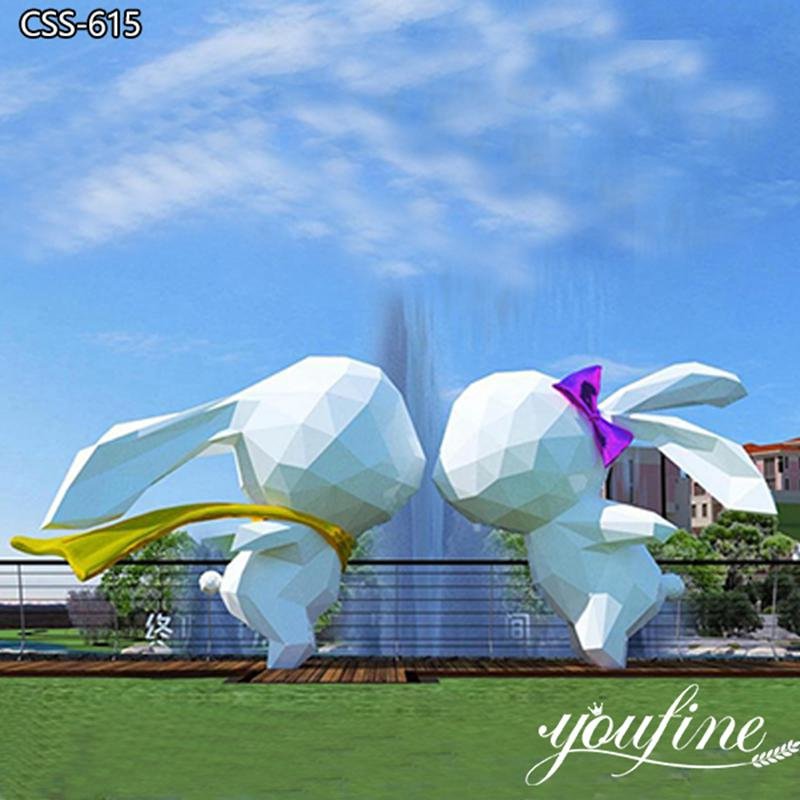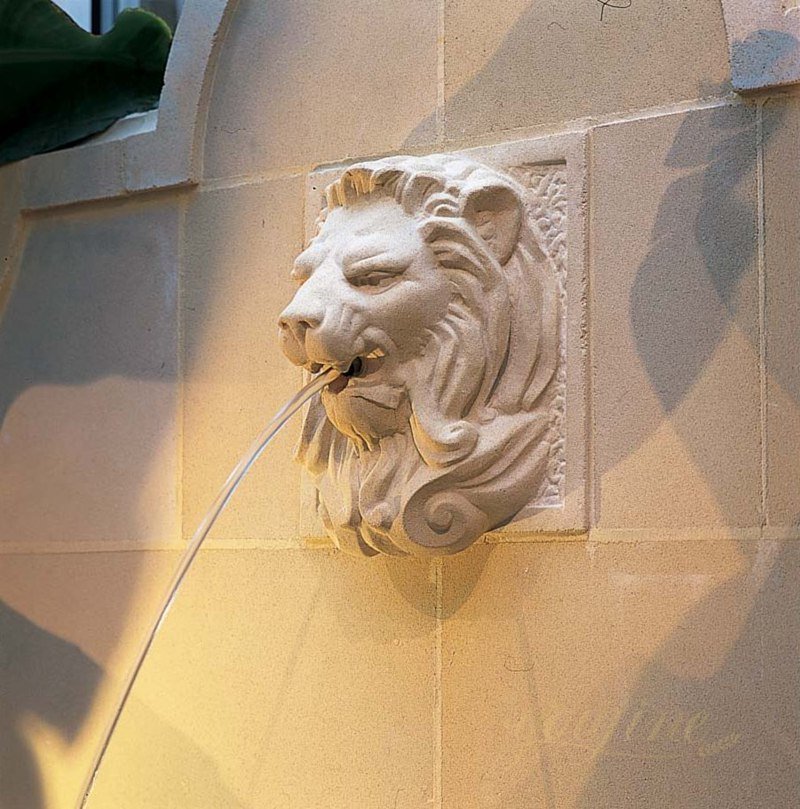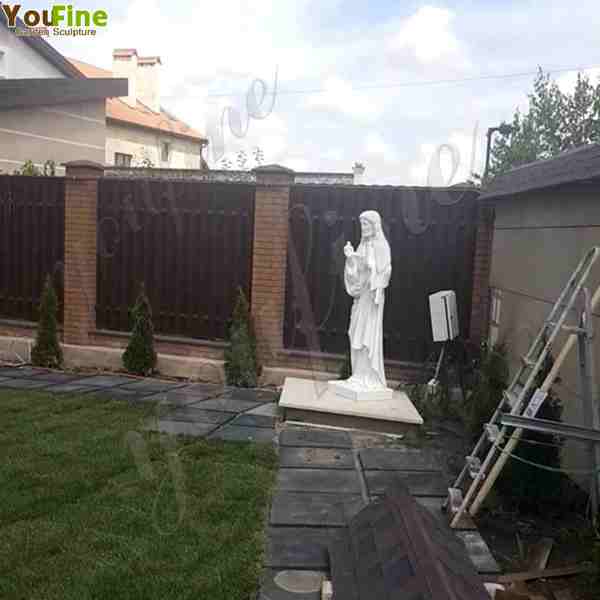Veiled sculptures are a unique form of art that has captivated audiences for centuries. These sculptures depict figures, mostly women, covered in veils that reveal the intricate details of the human form beneath. The technique of creating the illusion of transparency on a solid block of stone is a remarkable feat of technical skill and mastery. YouFine factory has artists with this technology and can provide you with personalized customization services for the sculptures. If you need it, please feel free to contact us.
The History and Significance:
Historical Background:
Veiled sculptures can be traced back to ancient Greece and Rome. Similar techniques can be found on some tomb statues to express mourning or respect for the deceased.
During the Renaissance, with the in-depth study of human anatomy and the rediscovery of classical culture, veiled sculptures became popular again.
During the Baroque period, veiled statues further developed into a way to display carving techniques, pursuing more realistic effects.
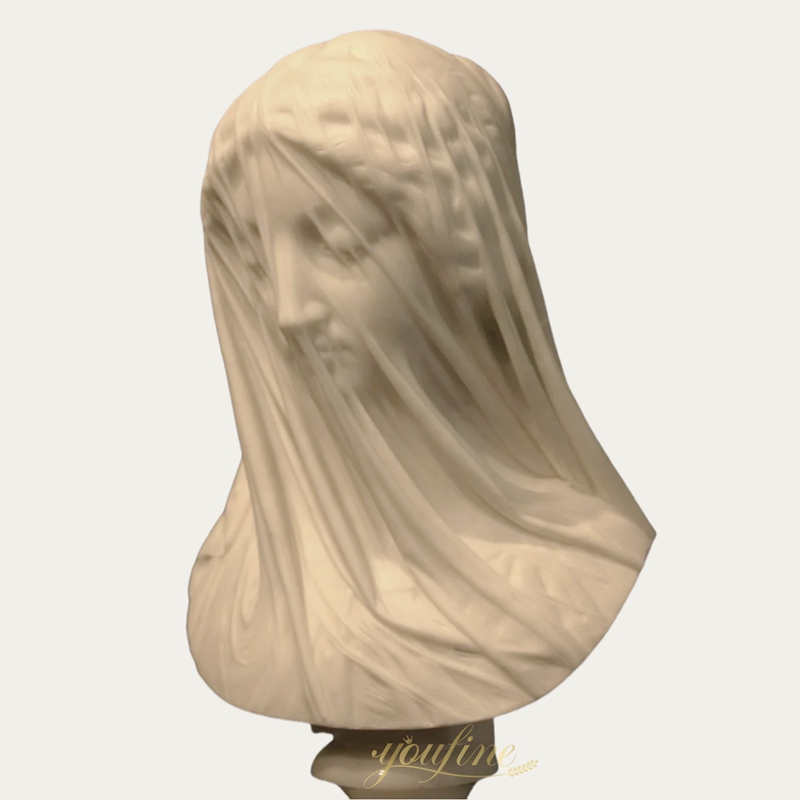
Symbolic Meaning:
Mystery and sacredness: Veils are often seen as a kind of cover-up, which can also arouse curiosity. In religious themes, they symbolize holiness and humility.
Emotional expression: used to express sadness, shyness, contemplation, calmness, or joy.
The combination of skills and art: It is a combination of difficult skills and materials, and is regarded as proof of the artist’s ability.
13 Famous Veiled Sculptures:
Vestal Virgin Tuccia (Corradini sculpture)
Antonio Corradini’s Veiled Woman or Marble Corradini Sculpture is a masterpiece of Rococo art. The sculpture portrays a female figure in a veil, revealing the details of the human form beneath. The sculpture is housed in the Palazzo Barberini, Rome, and is a testament to Corradini’s technical skill in creating veiled sculptures.
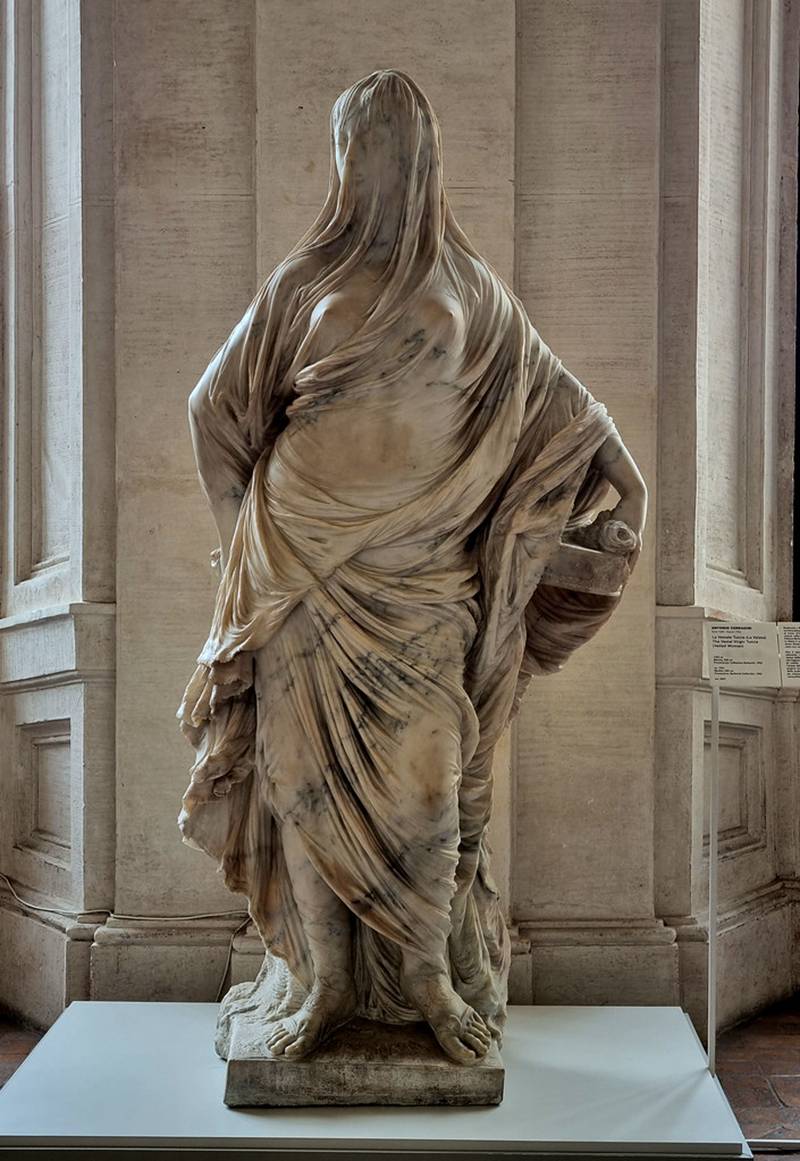
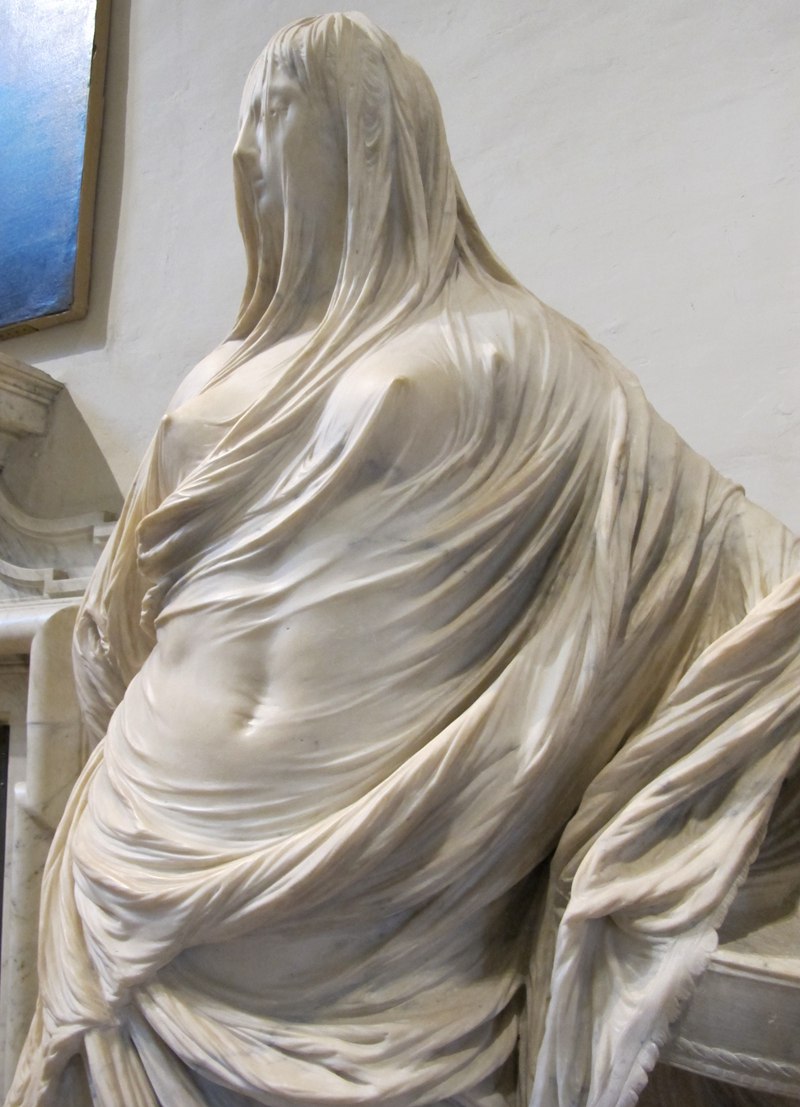
Bust of a Veiled Woman (Puritas)
The Bust of a Veiled Woman or Puritas is a marble sculpture created by Corradini. The sculpture depicts a young woman, possibly an allegory of Purity, covered in a veil that seems almost transparent. The sculpture is housed in the Museo del Settecento Veneziano, Ca’ Rezzonico, Venice, and is a testament to Corradini’s technical virtuosity.
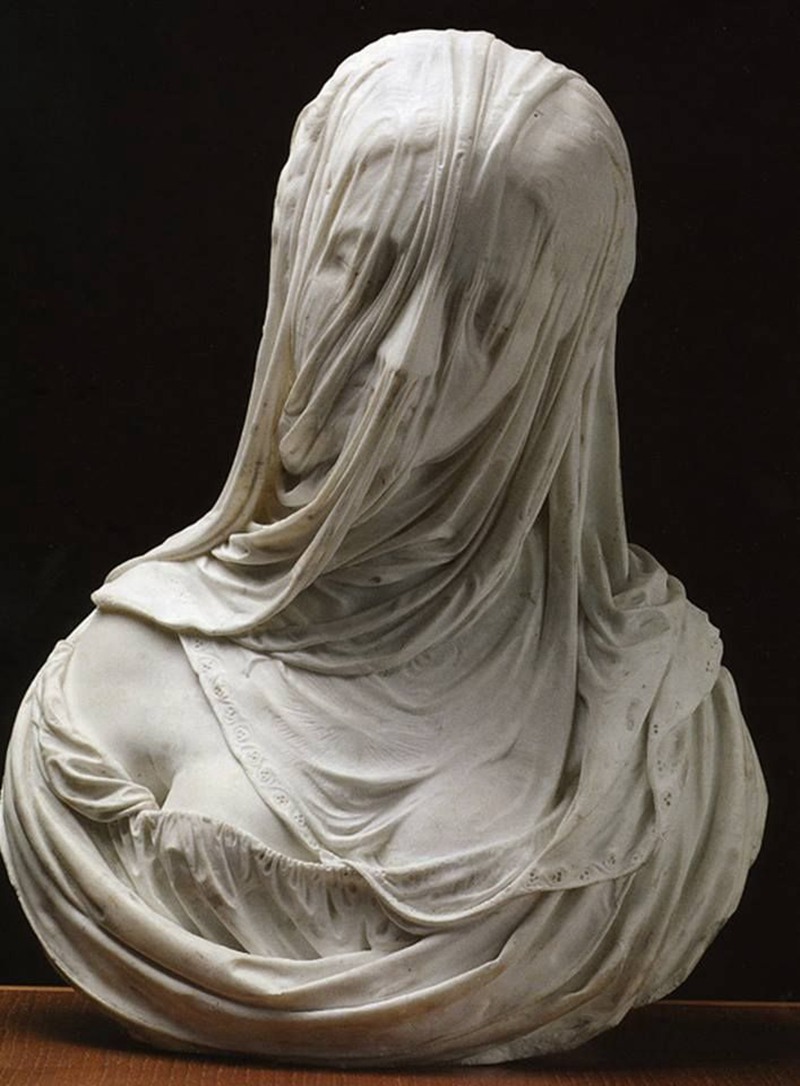
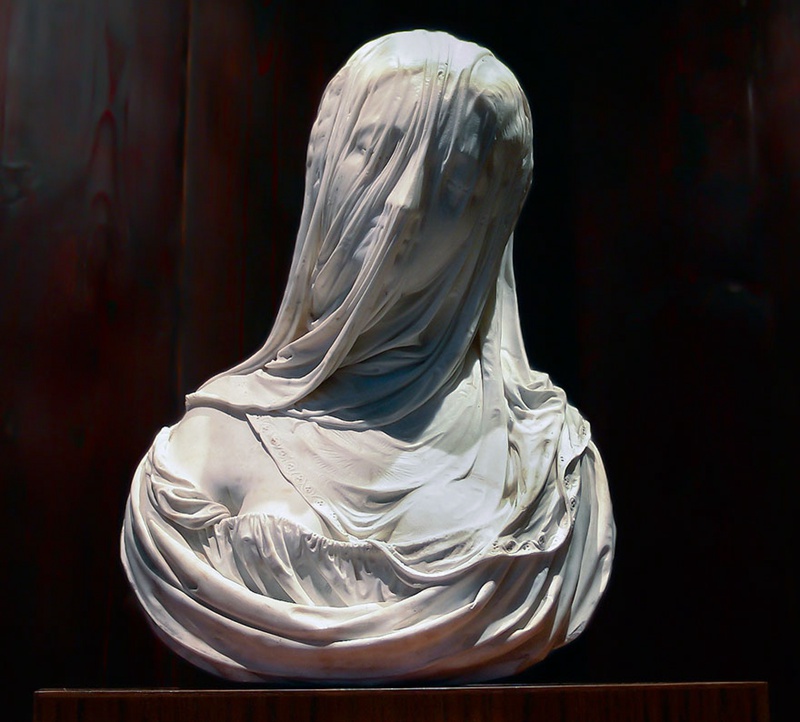
Modesty (Corradini sculpture)
Modesty or Chastity or Veiled Truth is a sculpture completed in 1752 by Corradini during the Rococo period. The Marble Modesty sculpture depicts a veiled female nude, which was a subject Corradini developed and refined throughout his career. The sculpture is positioned on a pedestal in the Cappella Sansevero in Naples and is a testament to Corradini’s mastery of the medium of marble.
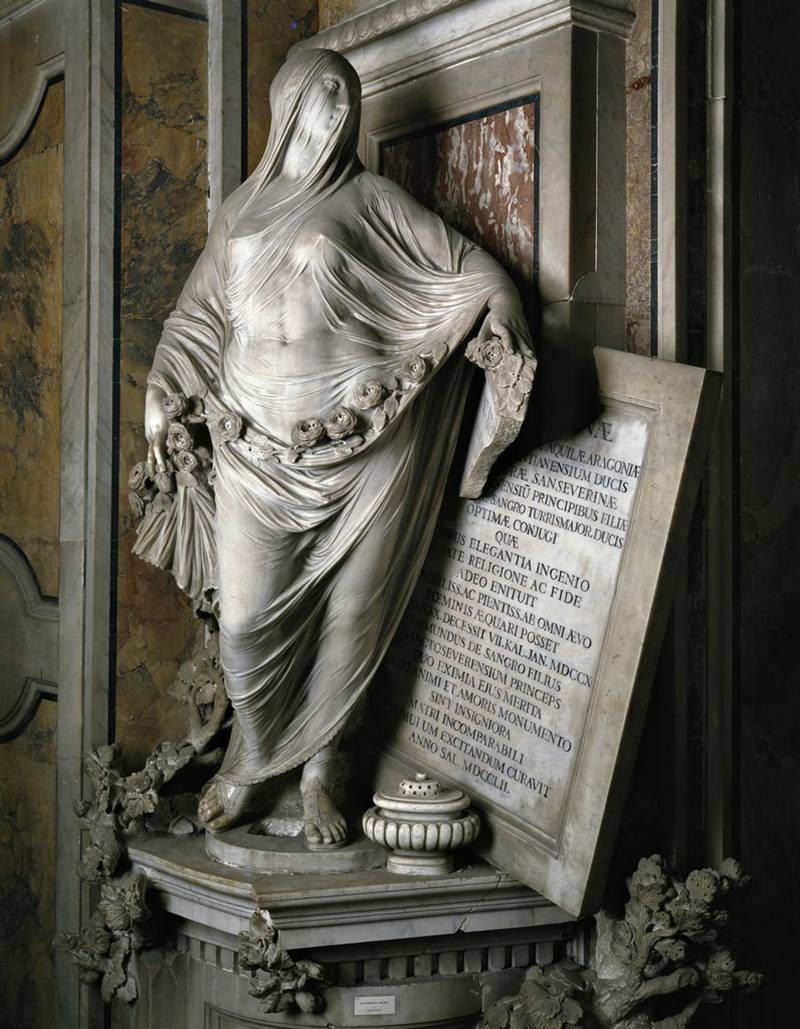
Veiled Christ
The Veiled Christ is a marble sculpture created in 1753 by Giuseppe Sanmartino, exhibited in the Cappella Sansevero, Naples, Italy. The Marble Veiled Christ Statue depicts the figure of Christ covered in a veil, revealing the details of the human form beneath. The sculpture is considered one of the world’s most remarkable sculptures and is a testament to Sanmartino’s mastery of the art of veiled sculptures.
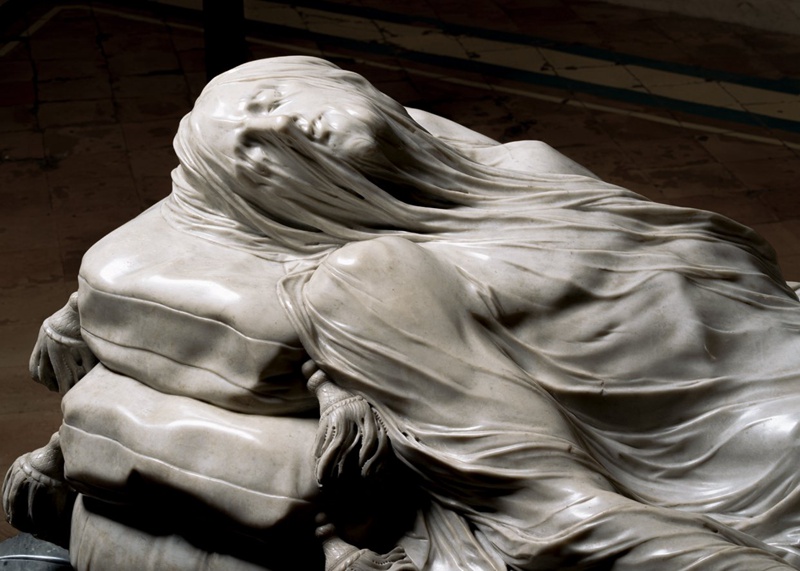
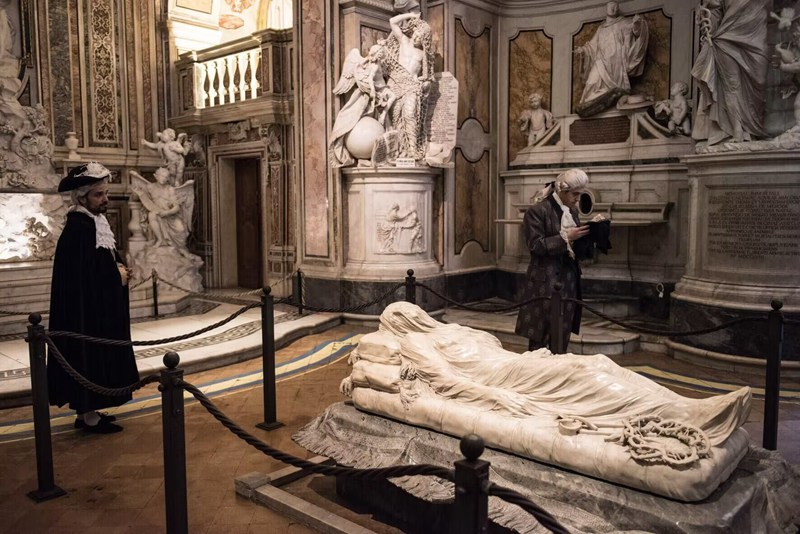

Veiled Vestal
The Marble Veiled Vestal is an 1847 sculpture by Rafaelle Monti, commissioned by William Cavendish, 6th Duke of Devonshire. The sculpture depicts a Vestal Virgin, covered in a veil that is almost transparent, revealing the details of the human form beneath. The sculpture is a testament to Monti’s skill in depicting translucent fabrics and was used as a representation of Elizabeth in Joe Wright’s Pride and Prejudice film.

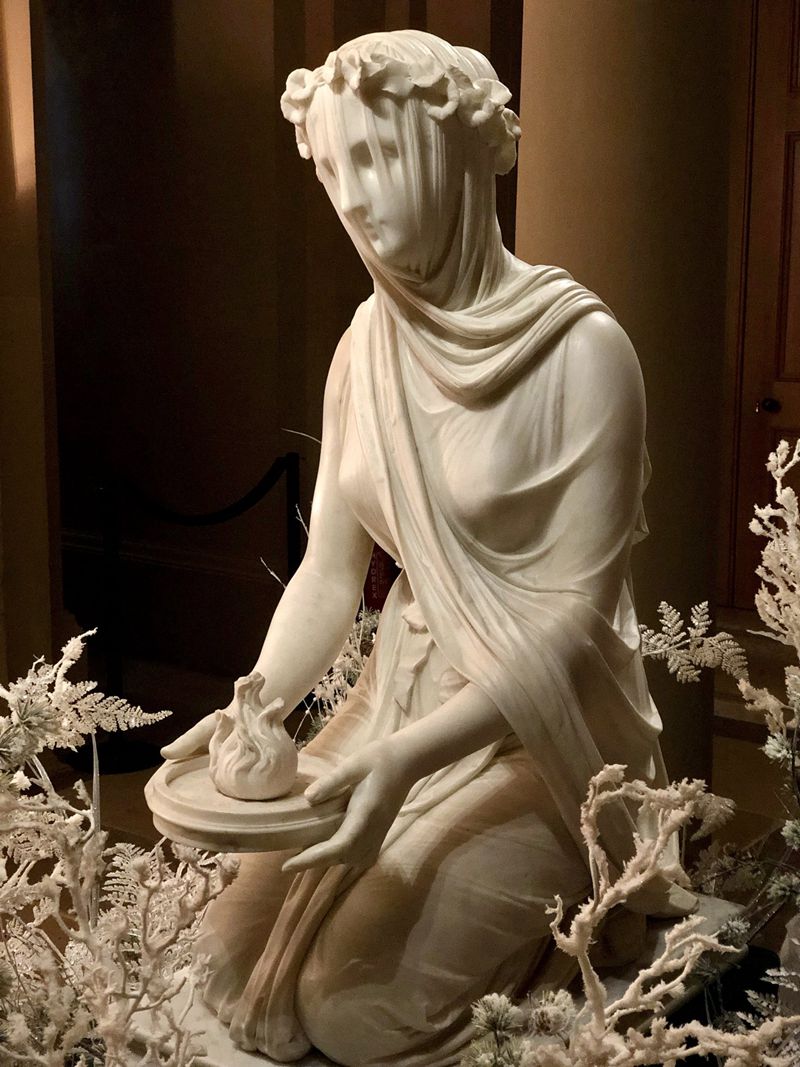
Undine Rising from the Waters
“Undine Rising from the Waters” is a marble sculpture created by American artist Chauncey Bradley Ives in 1884, which is a superb depiction of Undine, a character well-known in the 19th century.
The sculpture is inspired by Friedrich de la Motte Fouqué’s 1811 novel Undine. She is a water spirit who obtains a human soul by marrying a mortal knight. Due to her husband’s infidelity, Undine is forced by the law of her kind to end his life. Ives captures the tragic moment when Undine emerges from the water in a translucent veil to perform her tragic duty. The sculpture is an icon of neoclassical sculpture and also embodies the mastery of illusion carving techniques. There are multiple versions. Among the most famous are the version located in the Yale University Art Gallery and the version located in the Smithsonian American Art Museum.
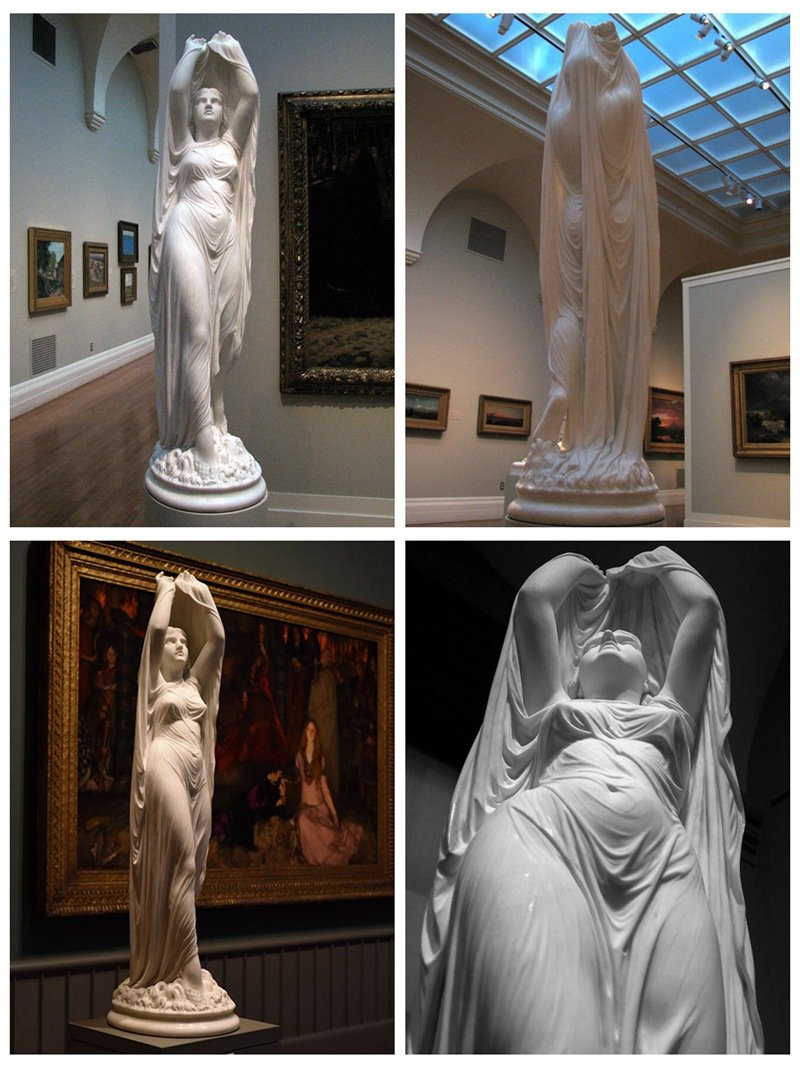
The Veiled Nun
The Veiled Nun is a marble bust depicting a female figure sculpted by an unidentified Italian workshop in c. 1863. The sculpture depicts a female figure covered in a veil that seems almost transparent, revealing the details of the human form beneath. Despite its title, the sculpture is not a nun but an allegorical figure. The sculpture is now displayed in the National Gallery of Art and is a testament to the popularity of veiled sculptures during the 19th century.
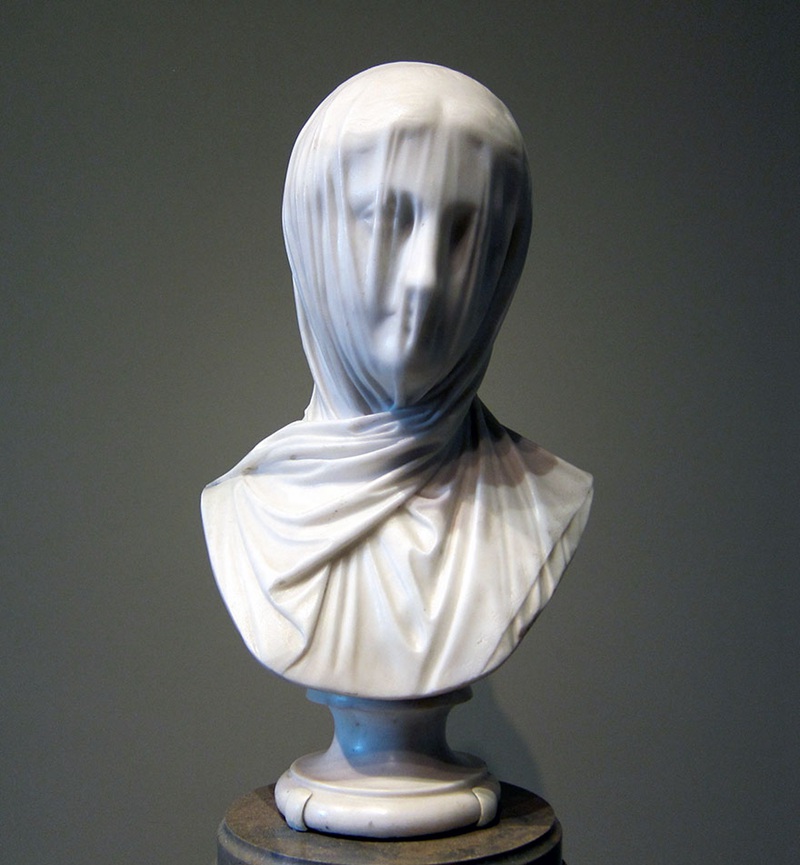
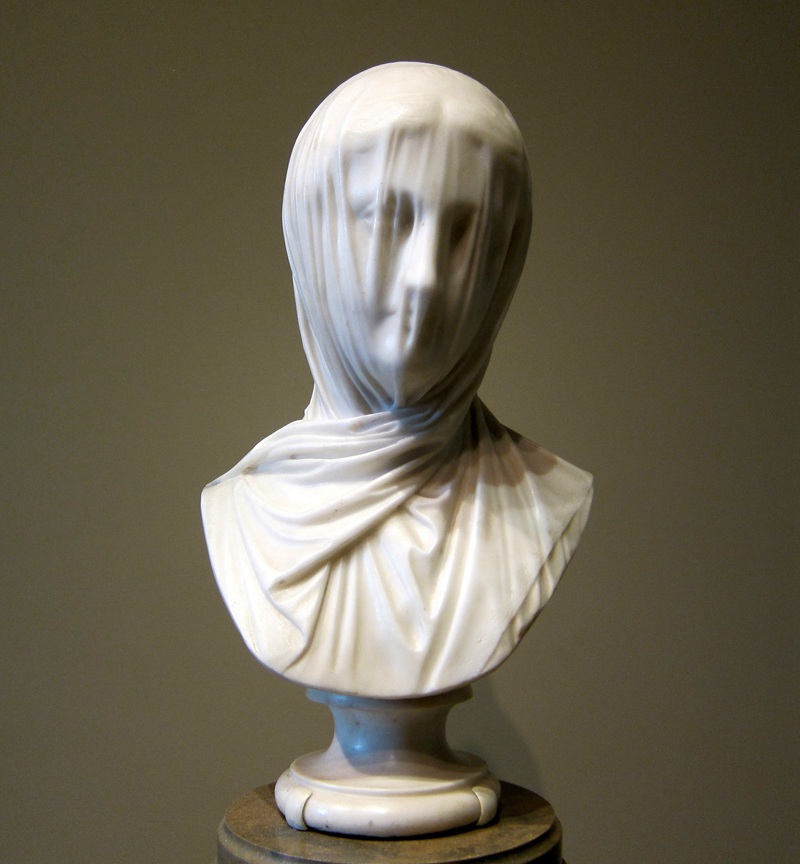
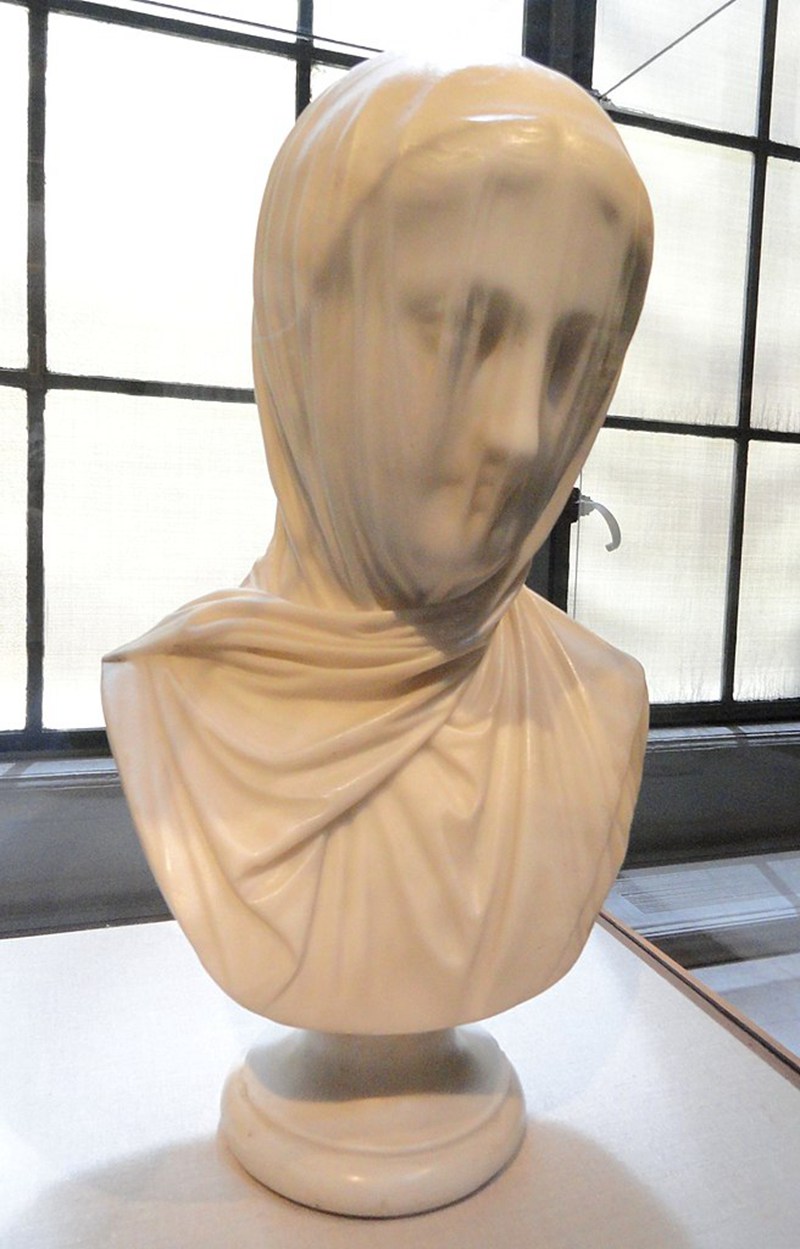
The Veiled Virgin
The Veiled Virgin is a Carrara marble statue of the bust of a veiled Virgin Mary, carved by Italian sculptor Giovanni Strazza in Rome in the early 1850s. The veil appears translucent, but it is actually carved from marble. The statue was brought to Newfoundland in 1856 and was kept at the Episcopal Palace in St. John’s until 1862 when it was presented to Mother Mary Magdalene O’Shaughnessy and has been under the care of Presentation Sisters since then. The Veiled Virgin was intended to symbolize Italy in the context of the Risorgimento, and marble busts of veiled women were a popular theme among Strazza’s contemporaries.
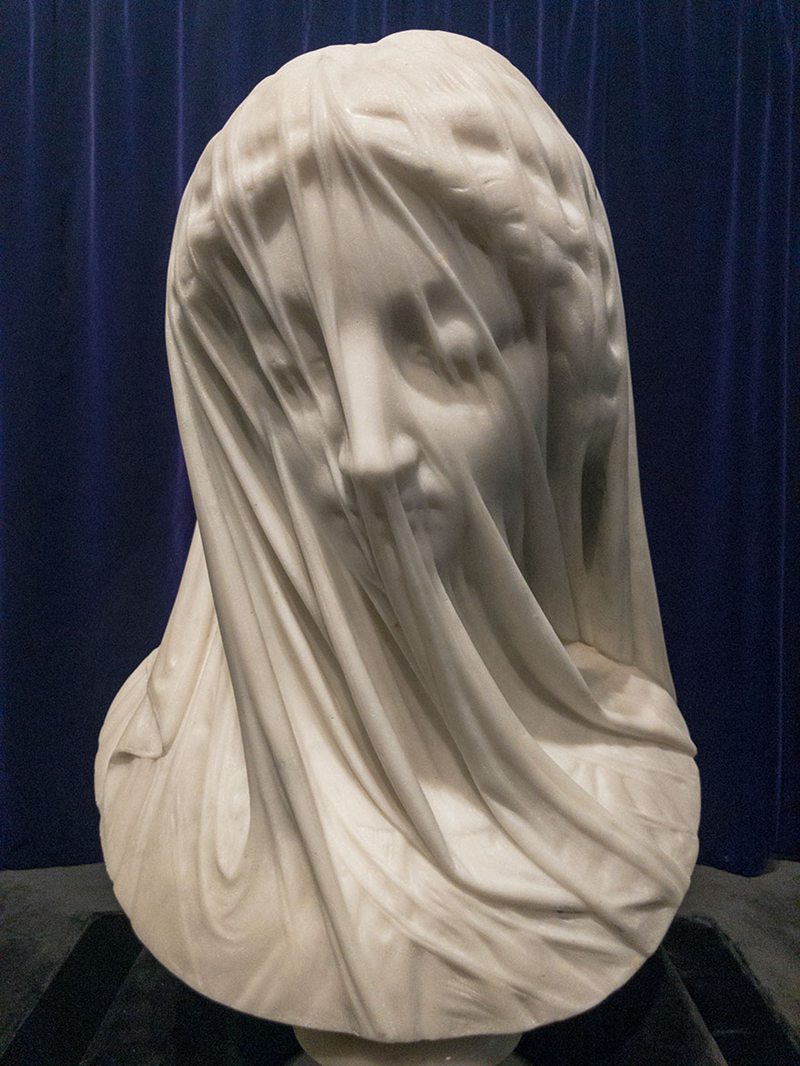
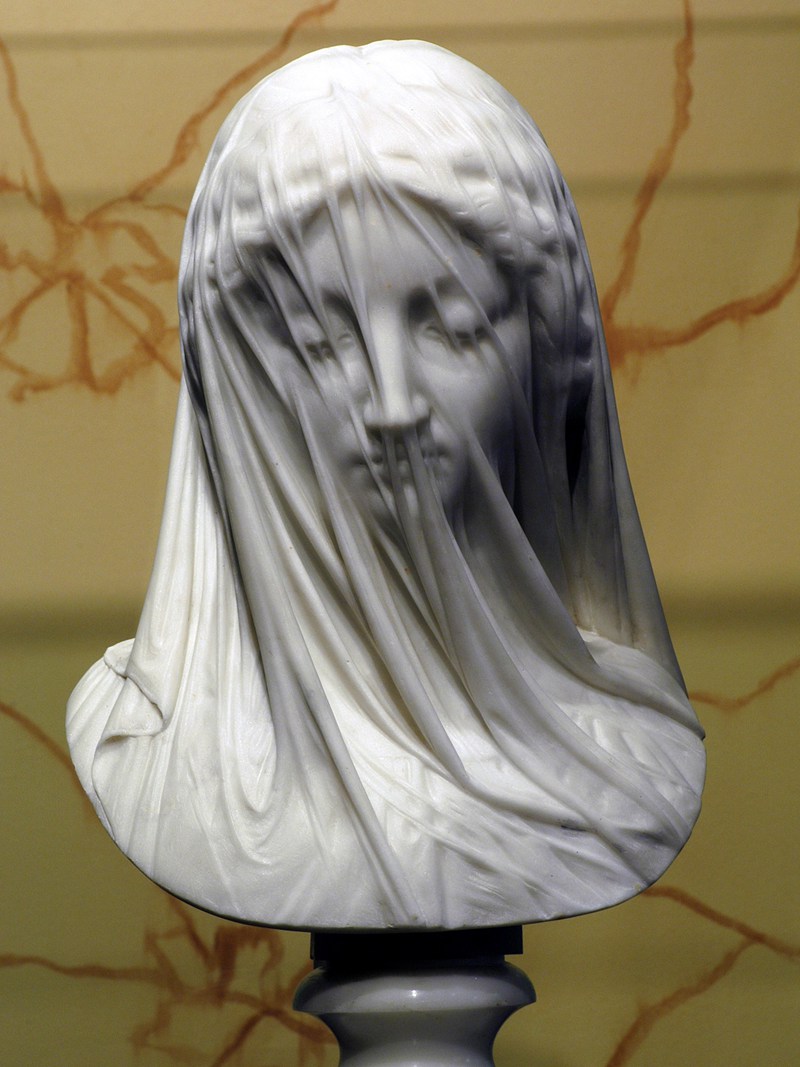
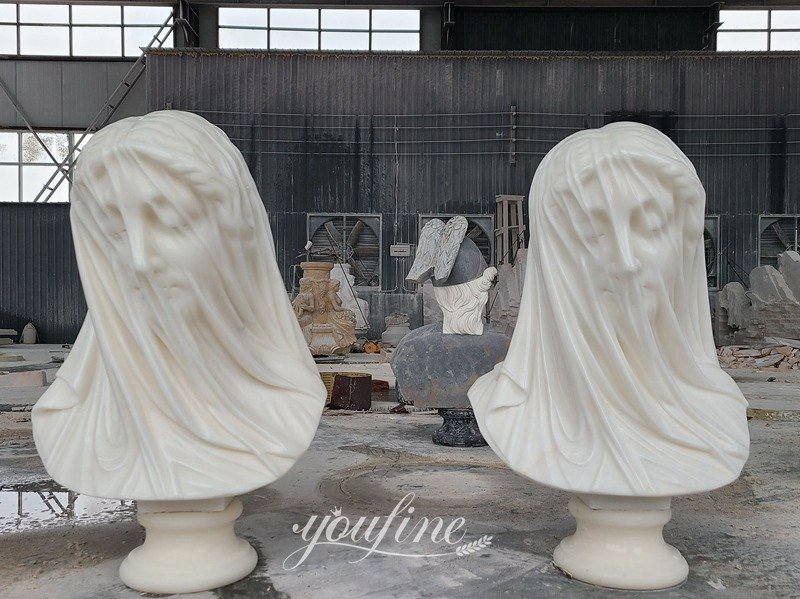
Veiled Rebecca
The veiled Rebecca statue, also known as The Veiled Rebekah or The Veiled Lady, is a 19th-century marble sculpture carved in Italian neoclassical style by the sculptor Giovanni Maria Benzoni. The sculpture depicts the biblical figure of Rebecca placed on a marble pedestal, and several copies of the sculpture were made in two different sizes. Presently, five sculptures are identified, located in the High Museum of Art in Atlanta, Berkshire Museum in Pittsfield, Detroit Institute of Arts, Salar Jung Museum in Hyderabad, and Cedarhurst Center for the Arts in Mount Vernon. The sculpture in the Detroit Institute of Arts is the smaller version, and Benzoni’s replicas of his works, including The Veiled Rebecca, were popular among crowned heads in the 19th century.
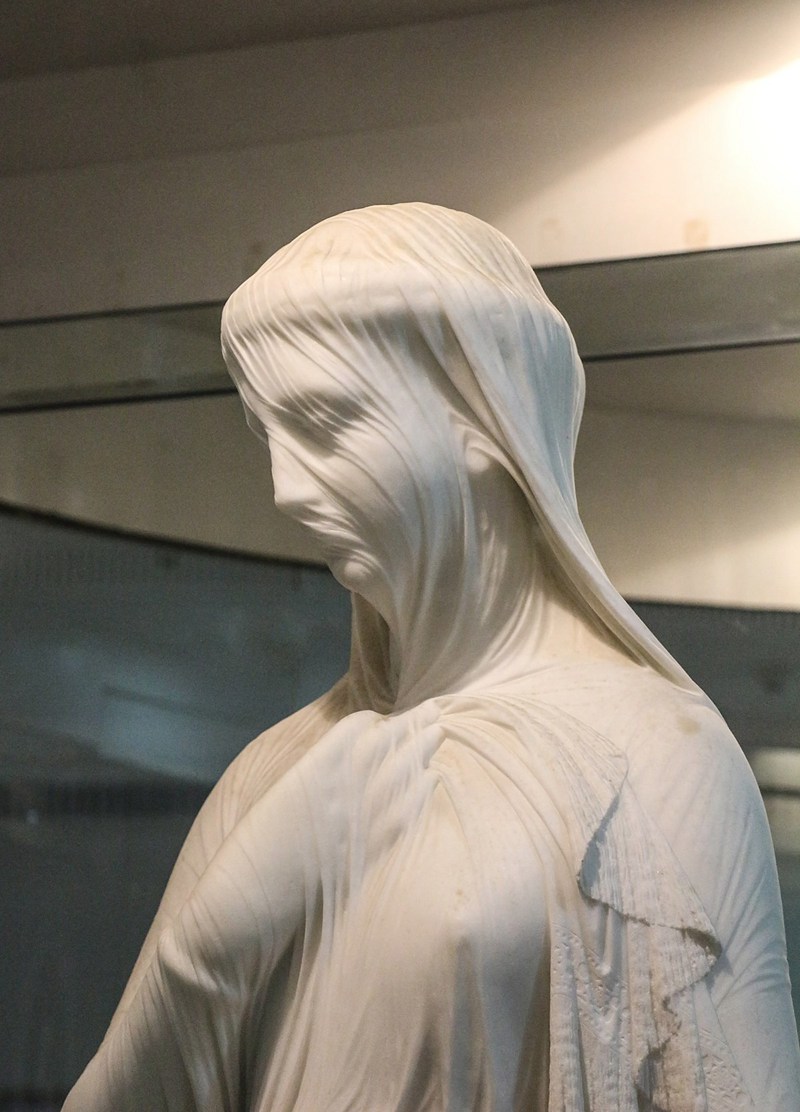
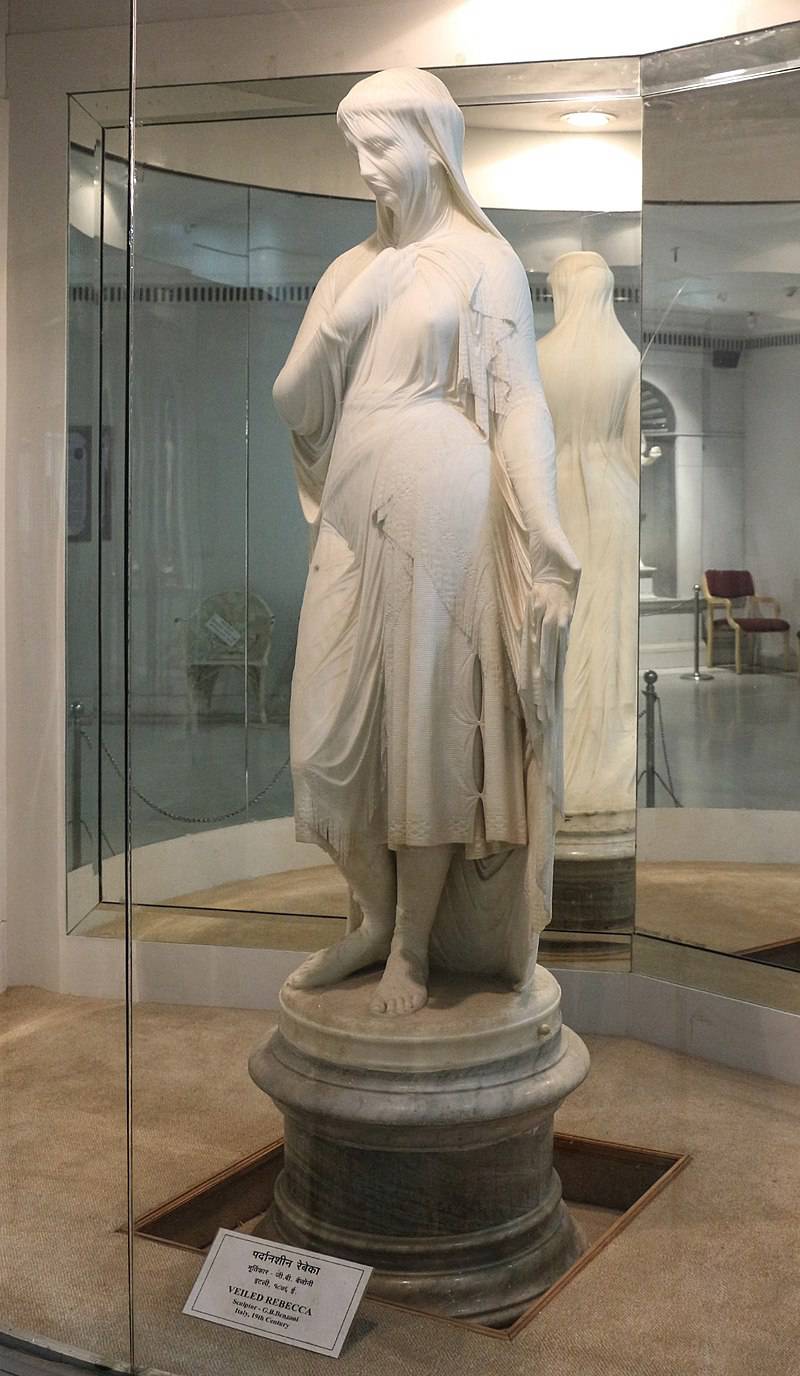
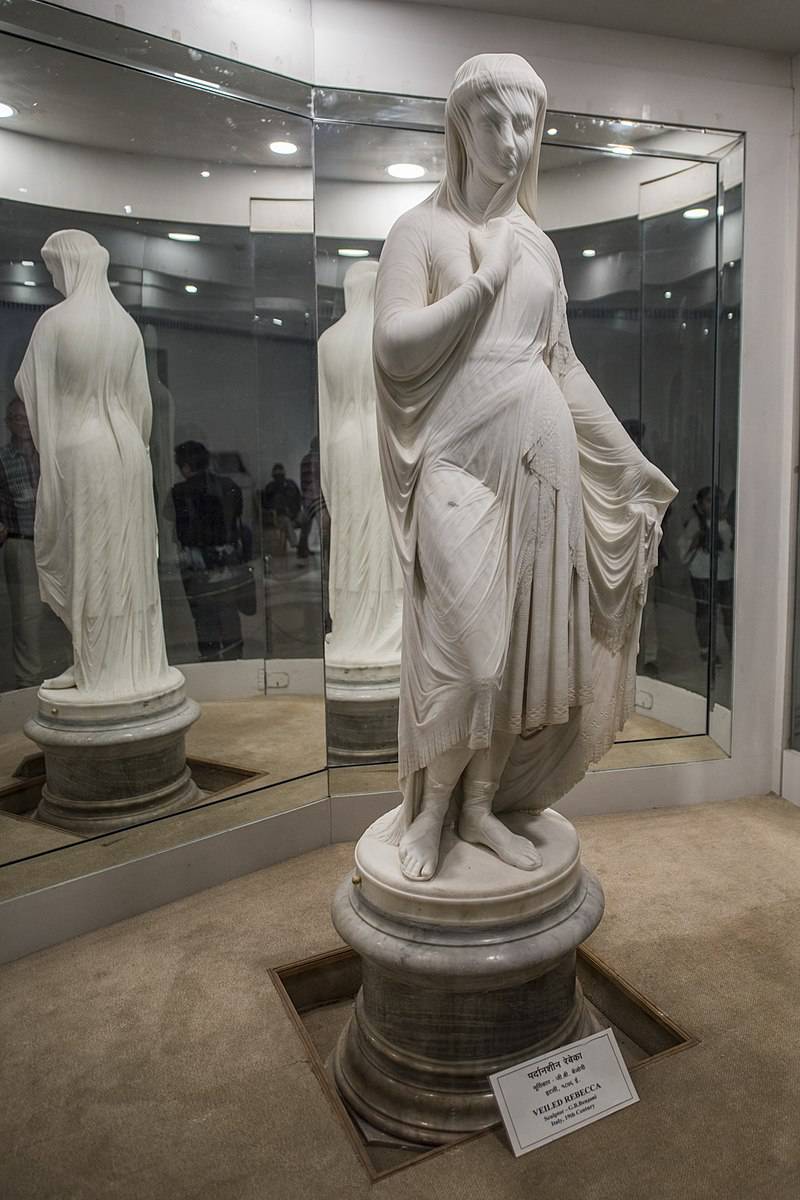
Veiled Woman Sculpture
This famous veiled sculpture was created by Italian artist Giovanni Battista Lombardi in 1869 and is called Veiled Woman. The original work is made of marble and is 26 inches high including the base. In the artist’s work, the lady with beautiful braids wears a thin veil on her head and an elegant knot at her neck. The lady has her eyes closed, as if in quiet contemplation. Her thin and upright nose and small face make her beautiful and moving.


Veiled bust of Isabel II
This famous veiled sculpture was created by Italian artist Pietro Tenerani. The artist used his superb skills to show the elegance of the queen wearing a crown. Although separated by a veil, we can still see the queen’s bright eyes and feel her beauty. The Queen also wears an exquisite brooch on her chest, which is also lifelike.




“Veiled Lady” by Pietro Rossi
Pietro Rossi is an Italian sculptor. He was little known to the public because his contemporary Italian sculptor Giovanni Strazza was more famous. He was not known until his marble bust created in 1882 became a symbol of Italy. The elegant lady in the sculpture has her eyes closed and a bead necklace around her neck. The veil on her chest and the knitted lace on her clothes are exquisite and delicate.


Veiled Woman by Rafaello Monti
Rafaello Monti is also an artist from Italy. He completed this artwork in 1854. The woman in the sculpture is tiptoeing off the ground, and the support of the skirt behind her makes her look like she is flying. She wears a scarf on her head, which is decorated with flowers, and covers her chest with her hands, showing a shy and gentle feeling.


How is a Veiled Sculpture Carved?
The creation of marble veiled sculpture is a complex project that combines exquisite skills and profound artistic expression.
First, the artists will design the work based on their understanding of the figure and veil. They will focus on the posture of the human body and the expression of inner emotions.
Secondly, in the actual carving process, artists usually use high-quality marble raw materials, and then cut the stone into a rough shape and posture frame of the figure, and then carefully carve the marble according to the conceived design to show the body curves and pleated layers. Moreover, the artists cleverly use the uneven texture on the stone surface to express the thin and transparent characteristics of the veil.
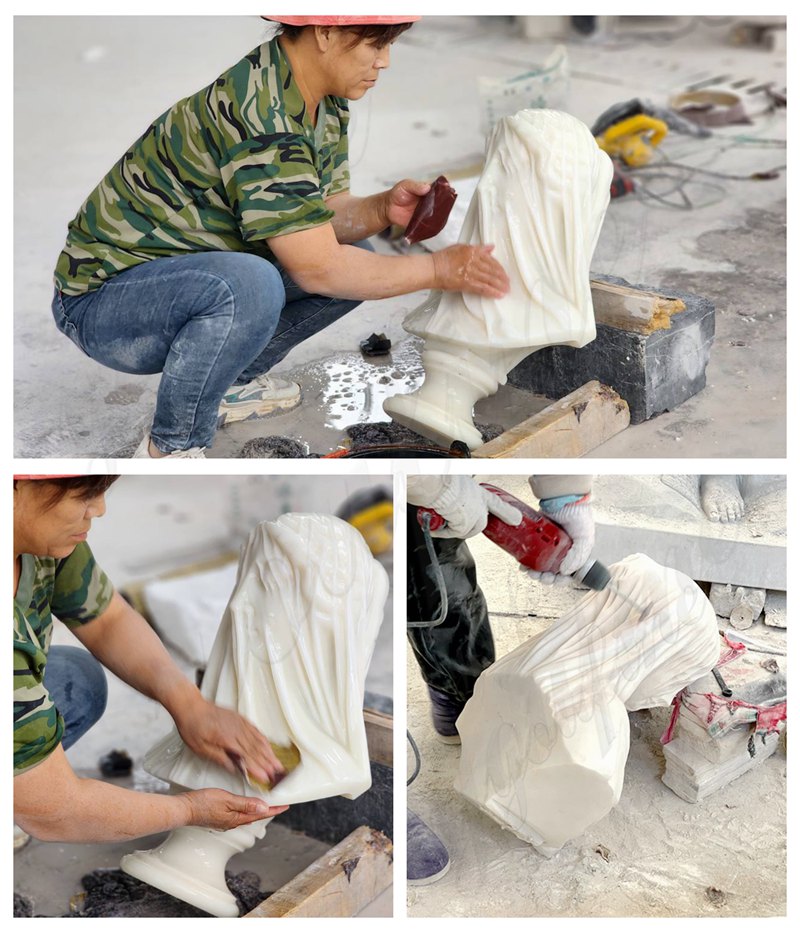
Veiled sculptures are a unique form of art that continues to captivate audiences with their illusion of transparency and the intricate details of the human form beneath. These sculptures are a testament to the technical skill and mastery of the artists who created them. Whether they are religious allegories or representations of purity, these sculptures are a celebration of the beauty and mystery.
YouFine has been focusing on fine marble carving for more than 40 years. We have sold many veiled series of marble sculptures and have received a lot of praise. They all say that our artist’s craftsmanship is so great that it is almost the same as the original work. Therefore, if you also want to add a marble-veiled sculpture or are looking for a suitable supplier, please contact us directly, YouFine is your best choice.
